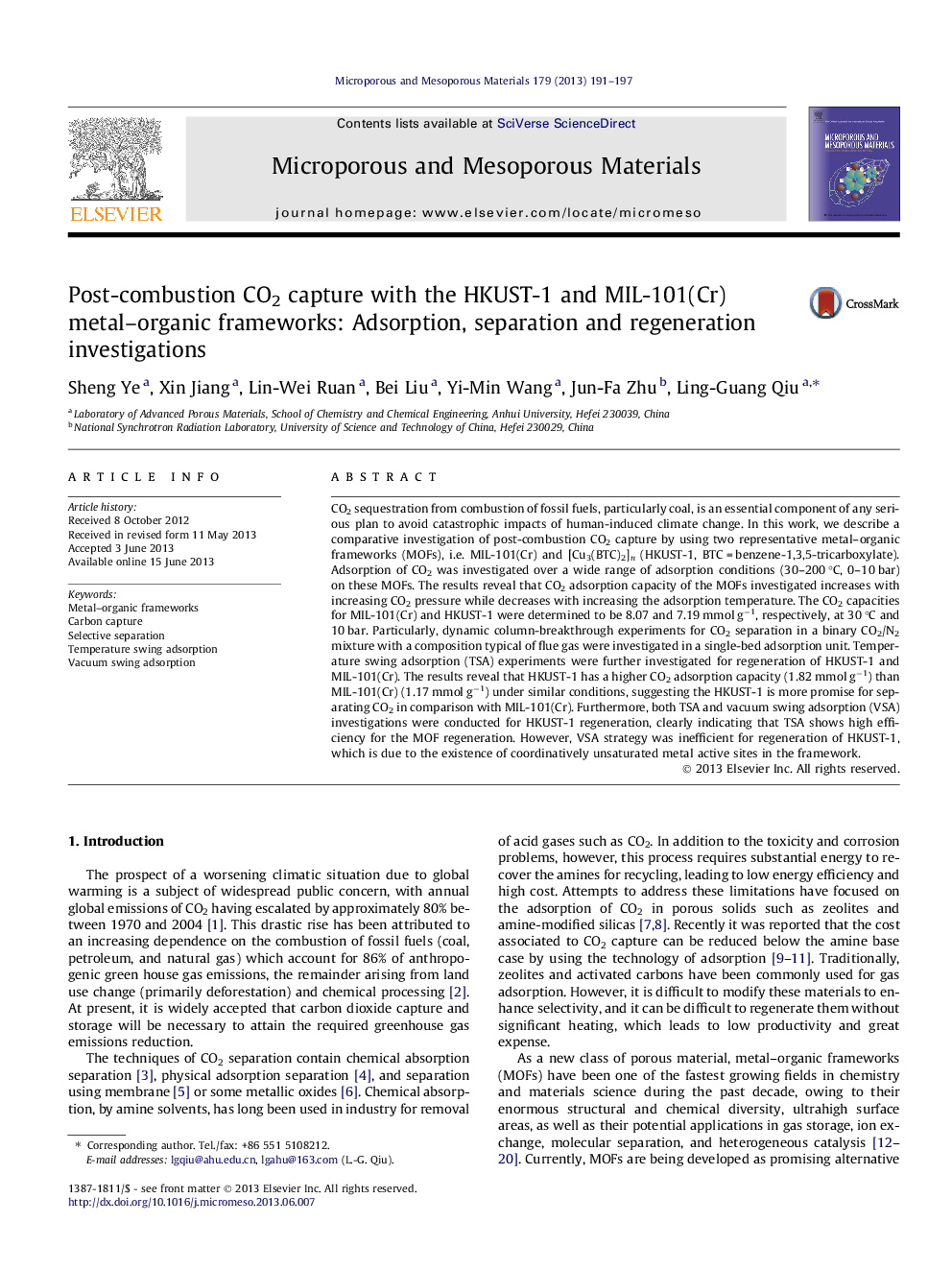| Article ID | Journal | Published Year | Pages | File Type |
|---|---|---|---|---|
| 73481 | Microporous and Mesoporous Materials | 2013 | 7 Pages |
•Post-combustion CO2 capture with metal–organic frameworks (MOFs).•Statics and kinetics of CO2 adsorption on MOFs.•Breakthrough experiments with CO2/N2 binary mixture.•Different strategies were compared for MOF regeneration.
CO2 sequestration from combustion of fossil fuels, particularly coal, is an essential component of any serious plan to avoid catastrophic impacts of human-induced climate change. In this work, we describe a comparative investigation of post-combustion CO2 capture by using two representative metal–organic frameworks (MOFs), i.e. MIL-101(Cr) and [Cu3(BTC)2]n (HKUST-1, BTC = benzene-1,3,5-tricarboxylate). Adsorption of CO2 was investigated over a wide range of adsorption conditions (30–200 °C, 0–10 bar) on these MOFs. The results reveal that CO2 adsorption capacity of the MOFs investigated increases with increasing CO2 pressure while decreases with increasing the adsorption temperature. The CO2 capacities for MIL-101(Cr) and HKUST-1 were determined to be 8.07 and 7.19 mmol g−1, respectively, at 30 °C and 10 bar. Particularly, dynamic column-breakthrough experiments for CO2 separation in a binary CO2/N2 mixture with a composition typical of flue gas were investigated in a single-bed adsorption unit. Temperature swing adsorption (TSA) experiments were further investigated for regeneration of HKUST-1 and MIL-101(Cr). The results reveal that HKUST-1 has a higher CO2 adsorption capacity (1.82 mmol g−1) than MIL-101(Cr) (1.17 mmol g−1) under similar conditions, suggesting the HKUST-1 is more promise for separating CO2 in comparison with MIL-101(Cr). Furthermore, both TSA and vacuum swing adsorption (VSA) investigations were conducted for HKUST-1 regeneration, clearly indicating that TSA shows high efficiency for the MOF regeneration. However, VSA strategy was inefficient for regeneration of HKUST-1, which is due to the existence of coordinatively unsaturated metal active sites in the framework.
Graphical abstractFigure optionsDownload full-size imageDownload as PowerPoint slide
